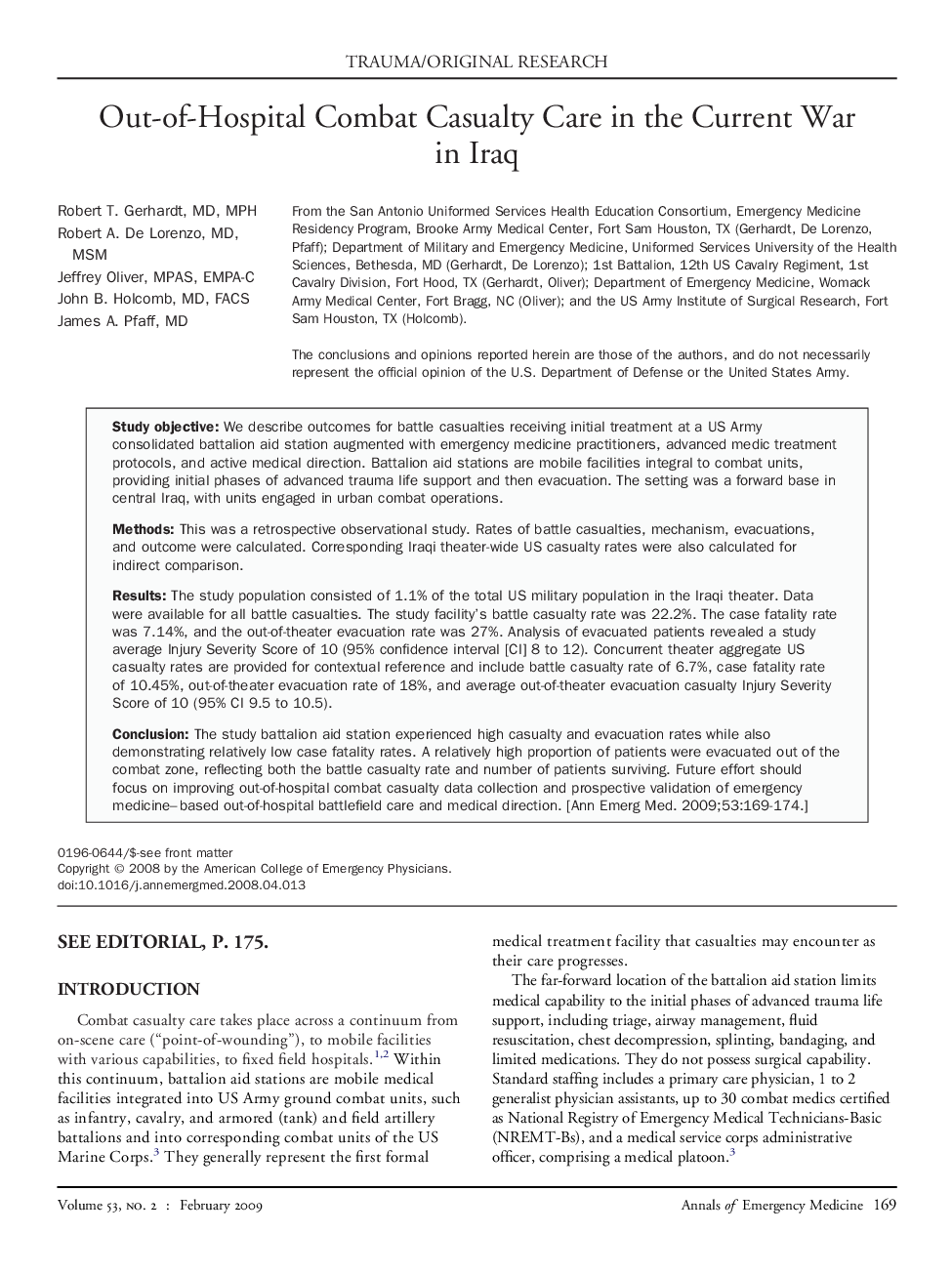| Article ID | Journal | Published Year | Pages | File Type |
|---|---|---|---|---|
| 3232438 | Annals of Emergency Medicine | 2009 | 6 Pages |
Study objectiveWe describe outcomes for battle casualties receiving initial treatment at a US Army consolidated battalion aid station augmented with emergency medicine practitioners, advanced medic treatment protocols, and active medical direction. Battalion aid stations are mobile facilities integral to combat units, providing initial phases of advanced trauma life support and then evacuation. The setting was a forward base in central Iraq, with units engaged in urban combat operations.MethodsThis was a retrospective observational study. Rates of battle casualties, mechanism, evacuations, and outcome were calculated. Corresponding Iraqi theater-wide US casualty rates were also calculated for indirect comparison.ResultsThe study population consisted of 1.1% of the total US military population in the Iraqi theater. Data were available for all battle casualties. The study facility's battle casualty rate was 22.2%. The case fatality rate was 7.14%, and the out-of-theater evacuation rate was 27%. Analysis of evacuated patients revealed a study average Injury Severity Score of 10 (95% confidence interval [CI] 8 to 12). Concurrent theater aggregate US casualty rates are provided for contextual reference and include battle casualty rate of 6.7%, case fatality rate of 10.45%, out-of-theater evacuation rate of 18%, and average out-of-theater evacuation casualty Injury Severity Score of 10 (95% CI 9.5 to 10.5).ConclusionThe study battalion aid station experienced high casualty and evacuation rates while also demonstrating relatively low case fatality rates. A relatively high proportion of patients were evacuated out of the combat zone, reflecting both the battle casualty rate and number of patients surviving. Future effort should focus on improving out-of-hospital combat casualty data collection and prospective validation of emergency medicine–based out-of-hospital battlefield care and medical direction.
